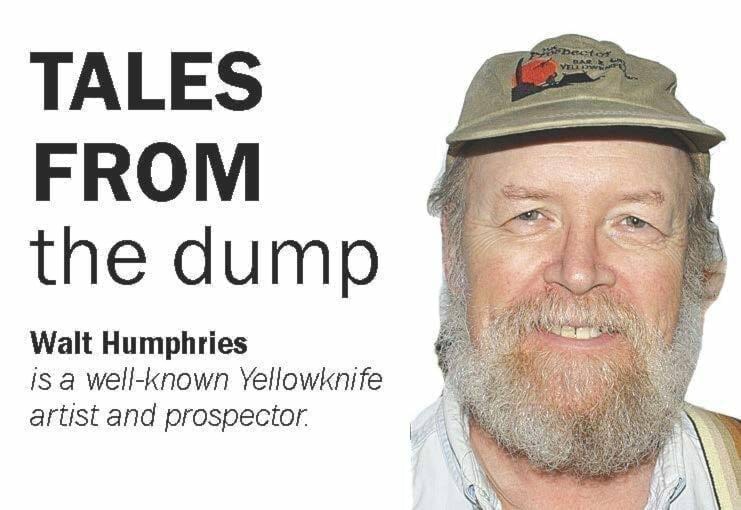Every year, the big melt seems to take a long, long time to get from winter to summer and everyone gets a little antsy for the ants to appear. They don’t come out until summer has arrived. However, you can pass the time by watching the big melts progress because it really is a fascinating natural phenomenon.
Going from almost complete snow and ice cover to open water is quite a feat of thermodynamics and it is very educational because the yearly melt, in many ways, mimics the big melt that ended the last ice age, which took thousands of years.
If you have ever flown over Greenland on a clear day, it gives you an idea of what continental glaciation looks like. That is what we had roughly 14,000 years ago and the estimate was three to four kilometres thick in the north. Try to imagine Yellowknife sitting under all that much ice. Then try to imagine it all melting. It would take a whole lot of years. Some would argue that we are still thawing out.
As a prospector, one of the things I like about our yearly melt is all the stuff that emerges as the roads, trails and ground becomes snow free. People lose a lot of stuff in the winter, including money. One year, I was taking a short cut on a trail through a wooded area and there I spotted a couple of $20 bills emerging. That was years ago — it would be like finding two $50 bills or even two $100 bills today due to our almost constant inflation.
As an aside, it always drives me nuts when they claim inflation is slowing. It may have slowed a little, but it is still inflation, and it is added onto all the other inflation, so it is compounded. Imagine a balloon growing every month of every year and eventually, that inflating balloon is going to burst.
With the snow melting, you just never know what may appear: money, keys, jewelry, gloves, mitts, scarves, toys, lighters, vapes, cigarette butts, liquor bottles and cans, pot containers, coffee cups, fast food containers, bits and pieces from vehicles and other oddities. One thing I found this year was a small but rather thick piece of glass I am still trying to figure out.
One spring, I found three little rubber duckies I reckon the raven had collected and then dropped along with a couple golf balls. Ravens, if they like someone, will leave them little gifts. I know I had one that was always dropping of little toys or shiny things to find.
So during the big melt, keep your eyes scanning the ground because you just never know what you might come across, see, or step on. Now, not all the things you find are necessarily good. Let’s do some mathematics:
If someone in your neighbourhood takes their dog for a walk every day and that dog has a daily poop during its walk and the dog’s human companion doesn’t clean it up, come spring you might have 180 dog poops to deal with. If they all ended up on your front yard, you might not be pleased about it. If the person smoked a couple cigarettes every walk and threw then on the ground that would be 360 butts emerging out of the snow during the melt and the chemicals in them are going to leech into the nearest lake.
If 1,000 people in Yellowknife did this, that would be 180,000 dog poops coming out of the snow and 360,000 butts. Now add in all the other litter people throw away and it is no wonder that in the spring, Yellowknife can look a little like one big garbage dump.
Humans are creating a recognizable layer in the sediments around the entire planet. We are now in the plastic era, and it is everywhere. So do your part to help to keep Yellowknife relatively clean. Thank you to all those who do their part.
